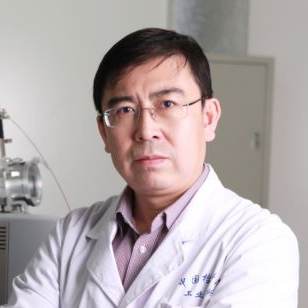Advanced Mass Spectrometric Technology: Development and Applications in Chemical and Biological Analysis
A special issue of Molecules (ISSN 1420-3049). This special issue belongs to the section "Analytical Chemistry".
Deadline for manuscript submissions: closed (31 October 2023) | Viewed by 3206
Special Issue Editors
Interests: mass spectrometry; ambient ionization; sample preparation; high-throughput analysis; reaction mechanism
Special Issue Information
Dear Colleagues,
This Special Issue focuses mainly on theoretical and experimental studies on mass spectrometry, specially designed for chemical and biological analysis. Mass spectrometry has become an indispensable tool to determine charged particles' mass-to-charge ratios (m/z). As is well-known, its performance heavily depends on the development of ionization sources, ion transfer systems, and mass analyzers. Their advances pave the way for the high-efficiency analysis of target compounds in various samples. This issue covers the recent advances in the related studies of an ambient ionization source, ion transfer system, mass analyzer, and their applications to chemical and biological analysis. Along with the practical need for in-field analysis, the miniature of mass spectrometry has also received considerable attention. As such, miniaturized mass spectrometers are also included in this topic. Reviews, perspectives, research communications, and articles are welcome. The collected contributions will receive considerable attention from researchers and significantly impact the rapid development of mass spectrometry.
Prof. Dr. Zhiping Zhang
Prof. Dr. Qiang Ma
Guest Editors
Manuscript Submission Information
Manuscripts should be submitted online at www.mdpi.com by registering and logging in to this website. Once you are registered, click here to go to the submission form. Manuscripts can be submitted until the deadline. All submissions that pass pre-check are peer-reviewed. Accepted papers will be published continuously in the journal (as soon as accepted) and will be listed together on the special issue website. Research articles, review articles as well as short communications are invited. For planned papers, a title and short abstract (about 100 words) can be sent to the Editorial Office for announcement on this website.
Submitted manuscripts should not have been published previously, nor be under consideration for publication elsewhere (except conference proceedings papers). All manuscripts are thoroughly refereed through a single-blind peer-review process. A guide for authors and other relevant information for submission of manuscripts is available on the Instructions for Authors page. Molecules is an international peer-reviewed open access semimonthly journal published by MDPI.
Please visit the Instructions for Authors page before submitting a manuscript. The Article Processing Charge (APC) for publication in this open access journal is 2700 CHF (Swiss Francs). Submitted papers should be well formatted and use good English. Authors may use MDPI's English editing service prior to publication or during author revisions.
Keywords
- mass spectrometry
- ionization source
- instrumentation
- high-throughput determination
- chemical and biological analysis
- food safety
- imaging
- sample matrix removal







